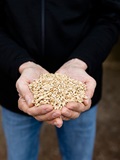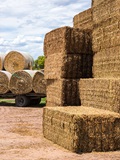South West Victoria
20 May 2020
| Date | SW 23 | SW 22 | SW 5YA |
|---|---|---|---|
| 06-Jan-23 | 292 | 200 | 225 |
| 13-Jan-23 | 300 | 200 | 233 |
| 20-Jan-23 | 313 | 200 | 233 |
| 27-Jan-23 | 323 | 200 | 234 |
| 03-Feb-23 | 323 | 200 | 236 |
| 10-Feb-23 | 333 | 200 | 232 |
| 17-Feb-23 | 333 | 200 | 229 |
| 24-Feb-23 | 333 | 200 | 225 |
| 03-Mar-23 | 333 | 200 | 225 |
| 10-Mar-23 | 333 | 200 | 228 |
| 17-Mar-23 | 338 | 200 | 229 |
| 24-Mar-23 | 343 | 200 | 229 |
| 31-Mar-23 | 343 | 200 | 238 |
| 07-Apr-23 | 343 | 200 | 238 |
| 14-Apr-23 | 343 | 200 | 238 |
| 21-Apr-23 | 343 | 200 | 236 |
| 28-Apr-23 | 345 | 200 | 234 |
| 05-May-23 | 345 | 200 | 234 |
| 12-May-23 | 345 | 200 | 237 |
| 19-May-23 | 345 | 200 | 239 |
| 26-May-23 | 345 | 200 | 250 |
| 02-Jun-23 | 345 | 200 | 253 |
| 09-Jun-23 | 345 | 200 | 253 |
| 16-Jun-23 | 343 | 200 | 253 |
| 23-Jun-23 | 340 | 200 | 273 |
| 30-Jun-23 | 335 | 200 | 259 |
| 07-Jul-23 | 330 | 205 | 260 |
| 14-Jul-23 | 330 | 205 | 259 |
| 21-Jul-23 | 330 | 205 | 260 |
| 28-Jul-23 | 320 | 205 | 262 |
| 04-Aug-23 | 315 | 205 | 264 |
| 11-Aug-23 | 305 | 205 | 261 |
| 18-Aug-23 | 305 | 205 | 249 |
| 25-Aug-23 | 305 | 205 | 250 |
| 01-Sep-23 | 305 | 205 | 255 |
| 08-Sep-23 | 205 | 260 | |
| 15-Sep-23 | 205 | 253 | |
| 22-Sep-23 | 203 | 253 | |
| 29-Sep-23 | 200 | 252 | |
| 06-Oct-23 | 198 | 252 | |
| 13-Oct-23 | 198 | 242 | |
| 20-Oct-23 | 203 | 243 | |
| 27-Oct-23 | 203 | 243 | |
| 03-Nov-23 | 203 | 241 | |
| 10-Nov-23 | 203 | 242 | |
| 17-Nov-23 | 210 | 243 | |
| 24-Nov-23 | 240 | 248 | |
| 01-Dec-23 | 244 | 244 | |
| 08-Dec-23 | 248 | 245 | |
| 15-Dec-23 | 263 | 243 | |
| 22-Dec-23 | 268 | 244 | |
| 29-Dec-23 | 284 | 249 |
Notes:
Change in price is the change since the last report. Hay quoted is sourced and delivered locally, GST exclusive unless stated otherwise. It should be noted that local prices quoted may not be the cheapest available, sourcing it from another region may be more affordable, and buyers are encouraged to evaluate all options. Prices are indicative to a mid-range shedded product, and based on the best indication of market value at the time of reporting. It should be noted there is a wide variation in quality of hay, prices for a mid-range product will not reflect the weighted average of trade. Prices will naturally vary based on the product quantity and quality, buyer/seller relationship and the size of the trade.The hay report has been commissioned by Dairy Australia to provide an independent and timely assessment of hay markets in each dairy region. This report is created using data provided by the Australian Fodder Industry Association (AFIA). It should be remembered that actual prices may vary for quality or other reasons. Whilst all reasonable steps have been taken to ensure the accuracy of the information contained in this report, Dairy Australia disclaims all liability to the fullest extent permitted by Australian law for any inadvertent errors and for any losses or damages stemming from reliance upon its content. Dairy Australia recommends all persons seek independent advice and, where appropriate, advice from a qualified advisor before making any decisions about changes to business strategy.
Commentary
- A much drier week this week, with average falls of less than 5mm of rain across most of the region. However, the eastern coastal parts of the area saw slightly higher falls of up to 10mm of rain for the week. Cold temperatures persist, though few frosts were reported.
- Grass is continuing to grow, with inland areas seeing better pasture growth than the very wet coastal regions. However, all areas are looking for more sunshine and warmth to prevent waterlogging and boost green feed options.
- Cereal crops in the northern part of the region continue to show good growth and potential with plenty of subsoil moisture to fill out the grains.
- Crops for hay production in the north of the region are looking promising, with mixed clover and vetch powering along in the conditions and adding lots of biomass. These crops are scheduled to be cut for hay at the end of September.
- A few clear days this week saw continued silage chopping of ryegrass and mixed pastures. Most of this silage went straight into pits on-farm, with little being baled for sale.
- Enquiries continue to lift with the wet coastal conditions requiring additional dry matter for herds. This is being somewhat balanced by the readily available green feed options away from the coastal regions. Many enquiries are from outside of the region.
- Some change to prices this week.
- Cereal hay: +/-0 ($280 to $330/t). Prices remain steady this week.
- Lucerne hay: +/-0 ($370 to $425/t). Prices remain steady this week.
- Straw: +/-0 ($90 to $140/t). Prices remain steady this week.
- Pasture hay: +5 ($240 to $290/t). Prices increase this week.
- Please note: Unless stated otherwise, prices are per tonne, sourced and delivered locally. The price range indicated is for feeds of varying quality with the price range generally indicative of quality of feed. We recommend feed testing and viewing of fodder before purchase to be sure of the quality of feed.

